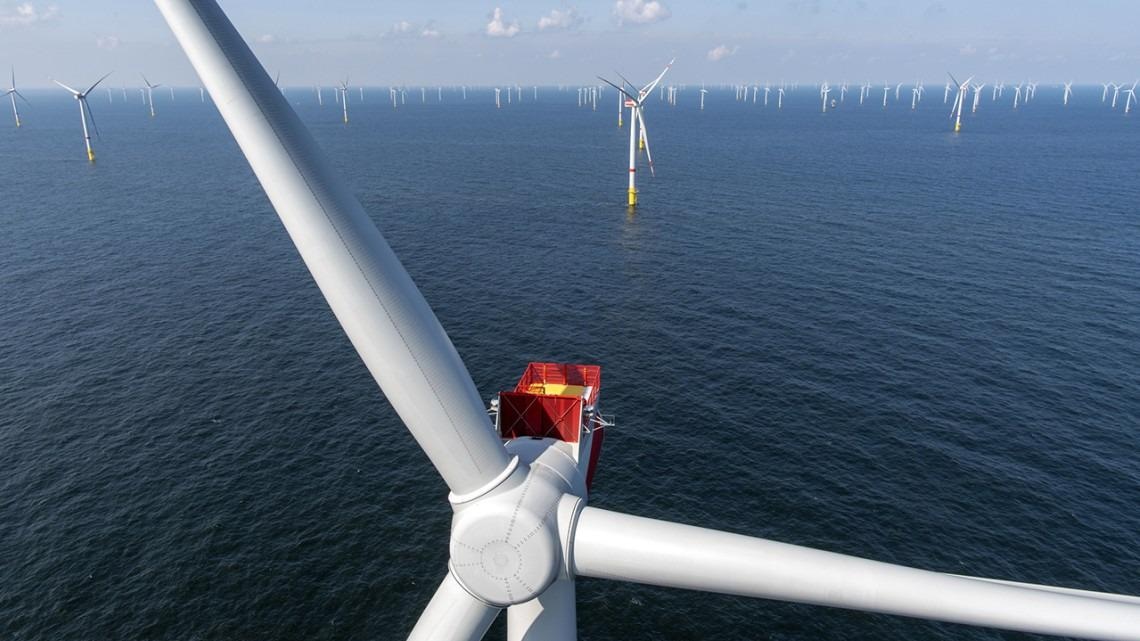Recent research from Cornell University demonstrates how to make offshore wind farms more effective at a time of imminent rapid expansion.
 The US plans to rapidly expand offshore wind farms over the next several years, and new Cornell research shows how to make those farms more efficient. Image Credit: iStock.
The US plans to rapidly expand offshore wind farms over the next several years, and new Cornell research shows how to make those farms more efficient. Image Credit: iStock.
Significant information from the US Department of the Interior approved plans of the White House to lease federal waters for numerous giant arrays of wind turbines along the waters of the East Coast.
The study was published on October 20th, 2021 in the journal Joule.
Massive upscaling of wind turbine deployments offshore is critical to achieving global and national goals to decarbonize the electricity supply.
Sara C. Pryor, Professor, Earth and Atmospheric Sciences, Cornell University
The Earth and Atmospheric Sciences department is shared by the College of Agricultural and Life Sciences, and the College of Engineering.
The excellent wind resource and proximity to large markets along the East Coast means it is the focus of America’s first-phase, offshore-wind projects, where thousands of physically larger and higher capacity wind turbines will be deployed over large areas (about 1.7 million acres of water, combined) at an unprecedented scale.”
Sara C. Pryor, Professor, Earth and Atmospheric Sciences, Cornell University
Deb Haaland, Secretary of the Interior, on October 13th, 2021, declared the course of action for offshore wind leasing agreements to encounter the White House-proclaimed aim to deploy 30 gigawatts—that can power 90 million homes—of East Coast offshore wind energy by 2030.
According to the New York State Energy Research and Development Authority (NYSERDA), the New York State level currently has five offshore wind projects in active development. The state aims at an offshore goal of 9,000 megawatts by 2035. The present offshore projects in total have about 4,300 megawatts, which can power around 2 million homes.
The upcoming federal rapid expansion of offshore turbine deployments offers an opportunity to decrease human-induced climate change; Pryor adds that it poses challenges on optimally locating offshore turbines to effectively accomplish electricity-generation goals.
According to the current research, a group of turbines might encounter around 30% lower power production because of wake effects.
The study holds low-turbulence conditions over water, along with the locations and size of the lease areas auctioned by the Interior Department’s Bureau of Ocean Energy Management, responsible. Individual wind farms suffer each other’s wake (disturbed airflow), even if the turbine arrays are 15 to 50 miles apart. This results in the wind turbines' early fatigue and lower power production.
Pryor’s simulations can aid in optimizing turbine spacing in these areas and support plans for future deployments.
The trend in the industry is to use large wind turbines deployed over bigger areas. For instance, in Europe, wind farms have higher capacity, from 321 megawatts to 621 megawatts between 2010–2019. A recent project off the eastern coast of the United Kingdom, the Hornsea Project, has numerous wind turbines and can generate 1.2 gigawatts of electrical power.
These industry trends are causing an increased probability of large wake losses [of energy] within individual wind farms and an increased probability of wake interactions. Improved understanding of wind turbine and wind-farm wake is essential to ensuring that financial investments in offshore wind achieves electricity-generation goals and do so at the lowest possible cost.”
Sara C. Pryor, Professor, Earth and Atmospheric Sciences, Cornell University
The researchers observe that the United States is far below its wind energy potential. According to the US Energy Information Administration, the whole of the United States employs more than 4,146 terawatts of electricity yearly. Pryor states that the offshore wind resources around the United States can produce over 7,000 terawatt-hours per year, with a possible electricity production surpassing demand.
At the same time, researchers and policymakers are anticipating COP26, the 2021 United Nations Climate Change Conference (Conference of the Parties) starting on October 31st, 2021.
Pryor adds, “The proposed energy and infrastructure bill is on everyone’s mind. With the White House issuing commitments and briefing notes about offshore wind energy expansion and COP26 starting, decarbonizing our electricity supply is a key component of meeting any climate change goals.”
Along with Pryor, the study, “Wind Power Production From Very Large Offshore Wind Farms,” was co-authored by Rebecca J. Barthelmie, professor in the Sibley School of Mechanical and Aerospace Engineering, in the College of Engineering; and Tristan J. Shepherd, postdoctoral research fellow in earth and atmospheric sciences. Pryor and Barthelmie are fellows in the Cornell Atkinson Center for Sustainability.
The research was funded by the US Department of Energy (DOE), Office of Science, the Office of Energy Efficiency and Renewable Energy (DOE), and NYSERDA, via the National Offshore Wind Research and Development consortium. Cornell Atkinson provided funding for this study earlier.
Journal Reference:
Pryor, S. C., et al. (2021) Wind power production from very large offshore wind farms. Joule. doi.org/10.1016/j.joule.2021.09.002.